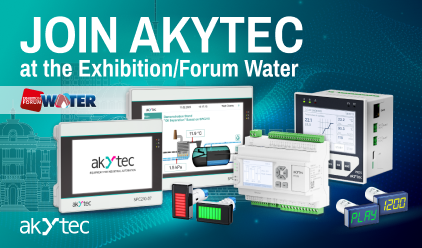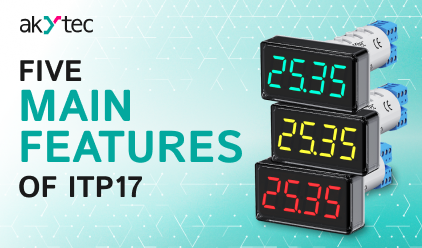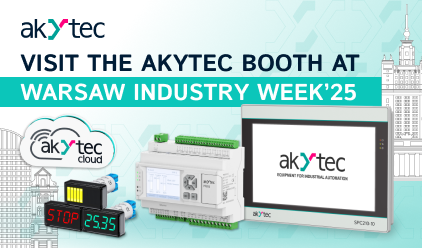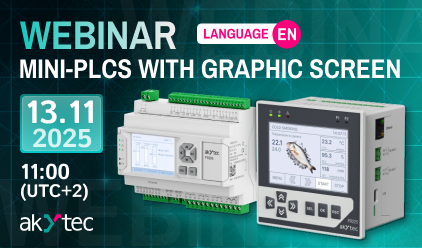akYtec News
11/14/2025 1:28 PM

akYtec will participate in SAJAM/FORUM VODE 2025, a key regional event focused on water technology, water management, monitoring, and process automation.Read More
Posted in News
10/31/2025 6:59 AM

The ITP17 is a versatile three-color digital indicator designed for process control applications. It simplifies monitoring by processing signals from various sensors and displaying real-time values with color-coded threshold indications. Below are five key features that make the ITP17 a standout choice for industrial automation.Read More
Posted in News
Useful information
10/30/2025 4:13 PM

The PR225 is the latest addition to the PR series — a compact PLC in a panel-mounted enclosure with a 3.5" color graphic screen and Ethernet interface. The device offers an optimal combination of analog and discrete inputs and outputs, suitable for controlling systems in water supply, heating, air conditioning, ventilation, the food industry, and other applications.Read More
Posted in News
10/15/2025 6:11 PM

From November 4–6, 2025, akYtec will take part in Warsaw Industry Week, one of the most important industrial technology fairs in Central and Eastern Europe.Read More
Posted in News

We invite you to an exclusive online workshop where we will present akYtec’s range of compact indicators — compact devices designed for industrial process visualization in a wide range of applications.Read More
Posted in News
8/5/2025 2:15 PM

The ITP11 is one of the most reliable and efficient loop-powered indicators in akYtec’s product range. But what makes it so successful over the years? Let’s explore its working principle and applications in more detail.Read More
Posted in News
Useful information

Explore the ITP14 pressure and level indicator by akYtec, designed for optimal monitoring in aquaculture and fisheries.Read More
Posted in News
Applications & successful cases
7/30/2025 8:48 AM

akYtec continues to advance its ALP programming environment, introducing substantial enhancements in recent updates. Here's a detailed look at what version 2.9 and the newest release 2.10 bring to the table, making your programming and visualization tasks easier, faster, and more effective.Read More
Posted in News
7/30/2025 8:31 AM

Use ITP11 in the food industry.Read More
Posted in News
Applications & successful cases


